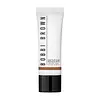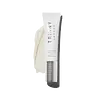What's inside
What's inside
 Key Ingredients
Key Ingredients

 Benefits
Benefits

 Concerns
Concerns

 Ingredients Side-by-side
Ingredients Side-by-side

Ethylhexyl Methoxycinnamate 7.5%
UV AbsorberTitanium Dioxide 3%
Cosmetic ColorantWater
Skin ConditioningPhenyl Trimethicone
Skin ConditioningButylene Glycol
HumectantPentaerythrityl Tetraoleate
EmollientSimmondsia Chinensis Seed Oil
EmollientPetrolatum
EmollientBiosaccharide Gum-1
HumectantSteareth-21
CleansingGlyceryl Stearate
EmollientSodium Hyaluronate
HumectantTocopheryl Acetate
AntioxidantPolymethyl Methacrylate
Magnesium Aluminum Silicate
AbsorbentEthylhexylglycerin
Skin ConditioningCaprylyl Glycol
EmollientCetyl Alcohol
EmollientAcrylamide/Sodium Acryloyldimethyltaurate Copolymer
Emulsion StabilisingPEG-12 Dimethicone
Skin ConditioningIsohexadecane
EmollientLecithin
EmollientXanthan Gum
EmulsifyingSteareth-2
EmulsifyingPotassium Stearate
CleansingCitric Acid
BufferingParfum
MaskingLimonene
PerfumingLinalool
PerfumingBenzyl Salicylate
PerfumingPolysorbate 80
EmulsifyingDisodium EDTA
Phenoxyethanol
PreservativeSorbic Acid
PreservativeCI 77891
Cosmetic ColorantIron Oxides
Ethylhexyl Methoxycinnamate 7.5%, Titanium Dioxide 3%, Water, Phenyl Trimethicone, Butylene Glycol, Pentaerythrityl Tetraoleate, Simmondsia Chinensis Seed Oil, Petrolatum, Biosaccharide Gum-1, Steareth-21, Glyceryl Stearate, Sodium Hyaluronate, Tocopheryl Acetate, Polymethyl Methacrylate, Magnesium Aluminum Silicate, Ethylhexylglycerin, Caprylyl Glycol, Cetyl Alcohol, Acrylamide/Sodium Acryloyldimethyltaurate Copolymer, PEG-12 Dimethicone, Isohexadecane, Lecithin, Xanthan Gum, Steareth-2, Potassium Stearate, Citric Acid, Parfum, Limonene, Linalool, Benzyl Salicylate, Polysorbate 80, Disodium EDTA, Phenoxyethanol, Sorbic Acid, CI 77891, Iron Oxides
Water
Skin ConditioningEthylhexyl Methoxycinnamate
UV AbsorberBenzophenone-3
UV AbsorberEthylhexyl Salicylate
UV AbsorberOctocrylene
UV AbsorberBis-Ethylhexyloxyphenol Methoxyphenyl Triazine
Skin ConditioningGlycerin
HumectantC12-15 Alkyl Benzoate
AntimicrobialCetyl Alcohol
EmollientDimethicone
EmollientMagnesium Aluminum Silicate
AbsorbentPhenoxyethanol
PreservativeBenzyl Alcohol
PerfumingBoron Nitride
AbsorbentEthylhexylglycerin
Skin ConditioningAcrylates/Ammonium Methacrylate Copolymer
Xanthan Gum
EmulsifyingSodium Lauryl Glucose Carboxylate
CleansingCetearyl Isononanoate
EmollientTriethyl Citrate
MaskingTocopheryl Acetate
AntioxidantParfum
MaskingLauryl Glucoside
CleansingCeteareth-20
CleansingCetearyl Alcohol
EmollientGlyceryl Stearate
EmollientBHT
AntioxidantDisodium EDTA
Caprylic/Capric Triglyceride
MaskingDehydroacetic Acid
PreservativeCitric Acid
BufferingHydrolyzed Eruca Sativa Leaf
AntioxidantGalactoarabinan
Ceteareth-12
EmulsifyingCetyl Palmitate
EmollientSodium Hyaluronate
HumectantArginine PCA
HumectantHoya Lacunosa Flower Extract
Skin ConditioningSodium Benzoate
MaskingPotassium Sorbate
PreservativePhaeodactylum Tricornutum Extract
HumectantCI 77891
Cosmetic ColorantCI 77491
Cosmetic ColorantCI 77492
Cosmetic ColorantCI 77499
Cosmetic ColorantWater, Ethylhexyl Methoxycinnamate, Benzophenone-3, Ethylhexyl Salicylate, Octocrylene, Bis-Ethylhexyloxyphenol Methoxyphenyl Triazine, Glycerin, C12-15 Alkyl Benzoate, Cetyl Alcohol, Dimethicone, Magnesium Aluminum Silicate, Phenoxyethanol, Benzyl Alcohol, Boron Nitride, Ethylhexylglycerin, Acrylates/Ammonium Methacrylate Copolymer, Xanthan Gum, Sodium Lauryl Glucose Carboxylate, Cetearyl Isononanoate, Triethyl Citrate, Tocopheryl Acetate, Parfum, Lauryl Glucoside, Ceteareth-20, Cetearyl Alcohol, Glyceryl Stearate, BHT, Disodium EDTA, Caprylic/Capric Triglyceride, Dehydroacetic Acid, Citric Acid, Hydrolyzed Eruca Sativa Leaf, Galactoarabinan, Ceteareth-12, Cetyl Palmitate, Sodium Hyaluronate, Arginine PCA, Hoya Lacunosa Flower Extract, Sodium Benzoate, Potassium Sorbate, Phaeodactylum Tricornutum Extract, CI 77891, CI 77491, CI 77492, CI 77499
Ingredients Explained
These ingredients are found in both products.
Ingredients higher up in an ingredient list are typically present in a larger amount.
Cetyl Alcohol is a fatty alcohol. Fatty Alcohols are most often used as an emollient or to thicken a product.
Its main roles are:
Though it has "alcohol" in the name, it is not related to denatured alcohol or ethyl alcohol.
The FDA allows products labeled "alcohol-free" to have fatty alcohols.
Learn more about Cetyl AlcoholCi 77891 is a white pigment from Titanium dioxide. It is naturally found in minerals such as rutile and ilmenite.
It's main function is to add a white color to cosmetics. It can also be mixed with other colors to create different shades.
Ci 77891 is commonly found in sunscreens due to its ability to block UV rays.
Learn more about CI 77891Citric Acid is an alpha hydroxy acid (AHA) naturally found in citrus fruits like oranges, lemons, and limes.
Like other AHAs, citric acid can exfoliate skin by breaking down the bonds that hold dead skin cells together. This helps reveal smoother and brighter skin underneath.
However, this exfoliating effect only happens at high concentrations (20%) which can be hard to find in cosmetic products.
Due to this, citric acid is usually included in small amounts as a pH adjuster. This helps keep products slightly more acidic and compatible with skin's natural pH.
In skincare formulas, citric acid can:
While it can provide some skin benefits, research shows lactic acid and glycolic acid are generally more effective and less irritating exfoliants.
Most citric acid used in skincare today is made by fermenting sugars (usually from molasses). This synthetic version is identical to the natural citrus form but easier to stabilize and use in formulations.
Read more about some other popular AHA's here:
Learn more about Citric AcidDisodium EDTA plays a role in making products more stable by aiding other preservatives.
It is a chelating agent, meaning it neutralizes metal ions that may be found in a product.
Disodium EDTA is a salt of edetic acid and is found to be safe in cosmetic ingredients.
Learn more about Disodium EDTAEthylhexyl Methoxycinnamate is an organic compound that provides UVB protection. It often goes by the more common name of octinoxate. It is created from methoxycinnamic acid and 2-ethylhexanol.
Ethylhexyl Methoxycinnamate absorbs UVB rays with wavelengths between 280-320 nm. UV absorbers protect your skin by using chemical reactions to convert UV rays into heat and energy.
UVB (290-320 nm) rays emit more energy than UVA rays. They are capable of damaging DNA, causing sunburns and are thought to be linked to skin cancer.
The state of Hawaii has banned sunscreens containing octinoxate due to its potential impact on coral reefs. More research is needed to bridge gaps in this research. The European Union allows higher levels of octinoxate in sunscreens than the US and Australia.
Ethylhexyl Methoxycinnamate is oil soluble. It is not stable and may lose efficacy when exposed to sunlight.
Learn more about Ethylhexyl MethoxycinnamateEthylhexylglycerin (we can't pronounce this either) is commonly used as a preservative and skin softener. It is derived from glyceryl.
You might see Ethylhexylglycerin often paired with other preservatives such as phenoxyethanol. Ethylhexylglycerin has been found to increase the effectiveness of these other preservatives.
Glyceryl Stearate is a mix of glycerin and stearic acid.
It is used to stabilize the mixing of water and oil ingredients. By preventing these ingredients from separating, it can help elongate shelf life. It can also help thicken the product's texture.
As an emollient, it helps soften skin and supports barrier-replenishing ingredients.
In cosmetics, Glyceryl Stearate is often made from vegetable oils or synthetically produced.
This ingredient may not be fungal-acne safe
Fun fact: The human body also creates Glyceryl Stearate naturally.
Learn more about Glyceryl StearateMagnesium Aluminum Silicate is a type of silica. It comes from naturally occuring minerals such as silicate ores and clay.
Magnesium aluminum silicate is used for enhancing texture and as an absorbent. Due to its large molecular size, it is unable to be absorbed into the skin.
Like other types of silica, this ingredient can be used to thicken a product. As an absorbent, it may be used to absorb extra water or help prevent clumping.
Although “aluminum” in an ingredient name can raise red flags for some consumers, the form and usage context matter significantly. For typical topical applications, there is no substantial evidence of health risks - such as cancer, neurotoxicity, or systemic “aluminum overload.”
Learn more about Magnesium Aluminum SilicateParfum is a catch-all term for an ingredient or more that is used to give a scent to products.
Also called "fragrance", this ingredient can be a blend of hundreds of chemicals or plant oils. This means every product with "fragrance" or "parfum" in the ingredients list is a different mixture.
For instance, Habanolide is a proprietary trade name for a specific aroma chemical. When used as a fragrance ingredient in cosmetics, most aroma chemicals fall under the broad labeling category of “FRAGRANCE” or “PARFUM” according to EU and US regulations.
The term 'parfum' or 'fragrance' is not regulated in many countries. In many cases, it is up to the brand to define this term.
For instance, many brands choose to label themselves as "fragrance-free" because they are not using synthetic fragrances. However, their products may still contain ingredients such as essential oils that are considered a fragrance by INCI standards.
One example is Calendula flower extract. Calendula is an essential oil that still imparts a scent or 'fragrance'.
Depending on the blend, the ingredients in the mixture can cause allergies and sensitivities on the skin. Some ingredients that are known EU allergens include linalool and citronellol.
Parfum can also be used to mask or cover an unpleasant scent.
The bottom line is: not all fragrances/parfum/ingredients are created equally. If you are worried about fragrances, we recommend taking a closer look at an ingredient. And of course, we always recommend speaking with a professional.
Learn more about ParfumPhenoxyethanol is a preservative that has germicide, antimicrobial, and aromatic properties. Studies show that phenoxyethanol can prevent microbial growth. By itself, it has a scent that is similar to that of a rose.
It's often used in formulations along with Caprylyl Glycol to preserve the shelf life of products.
Sodium Hyaluronate is hyaluronic acid's salt form. It is commonly derived from the sodium salt of hyaluronic acid.
Like hyaluronic acid, it is great at holding water and acts as a humectant. This makes it a great skin hydrating ingredient.
Sodium Hyaluronate is naturally occurring in our bodies and is mostly found in eye fluid and joints.
These are some other common types of Hyaluronic Acid:
Learn more about Sodium HyaluronateTocopheryl Acetate is AKA Vitamin E. It is an antioxidant and protects your skin from free radicals. Free radicals damage the skin by breaking down collagen.
One study found using Tocopheryl Acetate with Vitamin C decreased the number of sunburned cells.
Tocopheryl Acetate is commonly found in both skincare and dietary supplements.
Learn more about Tocopheryl AcetateWater. It's the most common cosmetic ingredient of all. You'll usually see it at the top of ingredient lists, meaning that it makes up the largest part of the product.
So why is it so popular? Water most often acts as a solvent - this means that it helps dissolve other ingredients into the formulation.
You'll also recognize water as that liquid we all need to stay alive. If you see this, drink a glass of water. Stay hydrated!
Learn more about WaterXanthan gum is used as a stabilizer and thickener within cosmetic products. It helps give products a sticky, thick feeling - preventing them from being too runny.
On the technical side of things, xanthan gum is a polysaccharide - a combination consisting of multiple sugar molecules bonded together.
Xanthan gum is a pretty common and great ingredient. It is a natural, non-toxic, non-irritating ingredient that is also commonly used in food products.
Learn more about Xanthan Gum